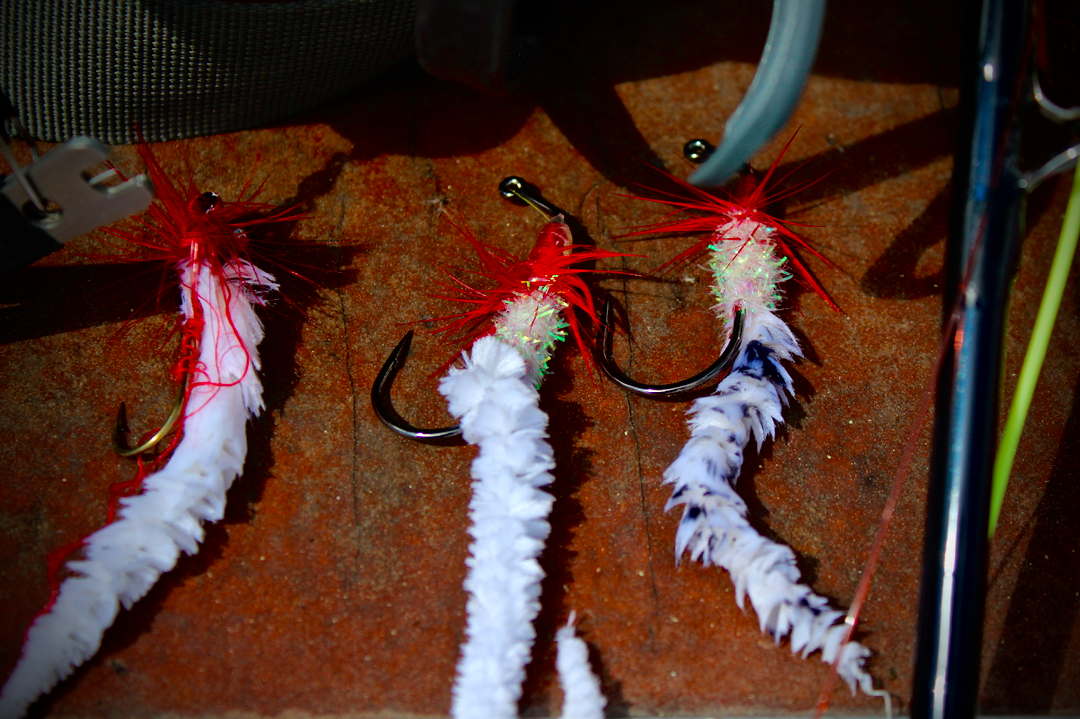Pike will do real damage to your flies. Check out the thread damage to the fly on the left, which is weighted with dumbbell eyes.
I just got back from an epic adventure in northern Manitoba—my son and I spent eight days chasing pike and walleye on McGavock Lake at Laurie River Lodge.
I love fly fishing for pike. Too few anglers appreciate pike on the fly, and this trip was no different. I was the only fly fisher at the lodge, and I enjoyed some pretty good success casting to big, toothy esox lucius in both shallow water and in deeper environs when the the weather turned south.
Before I left for the trip, I purchased a full-sink line, and then promptly proceeded to leave it on my kitchen table as I walked out the door and drove to the airport. So, to get down to the holding depth of the pike during a four-day cold snap, I used weighted flies and even added split shot when I felt I wasn’t getting deep enough. It worked just fine, even though the casting got a bit awkward at times.
I’m usually not a fan of using weighted lines (but I often use sink-tip lines when streamer fishing), simply because lifting it from the water can be a real chore after a thousand or so casts in a cold wind that occasionally spits rain at you (or even snow for a bit last week). But I get the utilitarian purpose of sinking line, and I have a couple of reels equipped with them.
If I had a preference—and the outcome was similar, in terms of fishing success—I’d rather simply use a weighted fly, or even add weight to the leader to get the fly down. I found this more versatile last week—when the weather improved and the pike moved into the shallows to spawn, I’d simply use the same pattern without weight. It was easy to switch back and forth without having to change rods, or reel spools.
What about you? Would rather add weight to your fly or leader, or would you rather go with a sinking line?
— Chris Hunt



